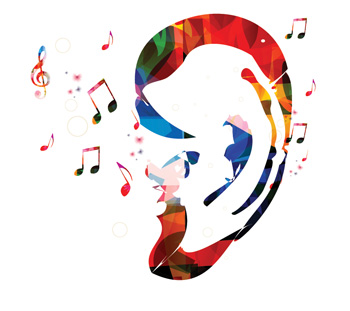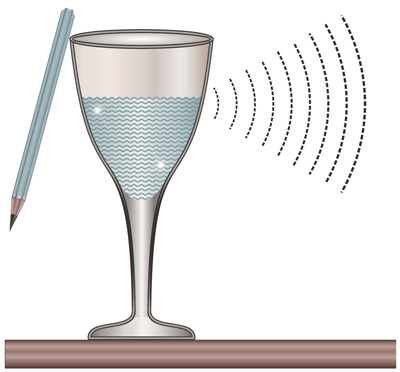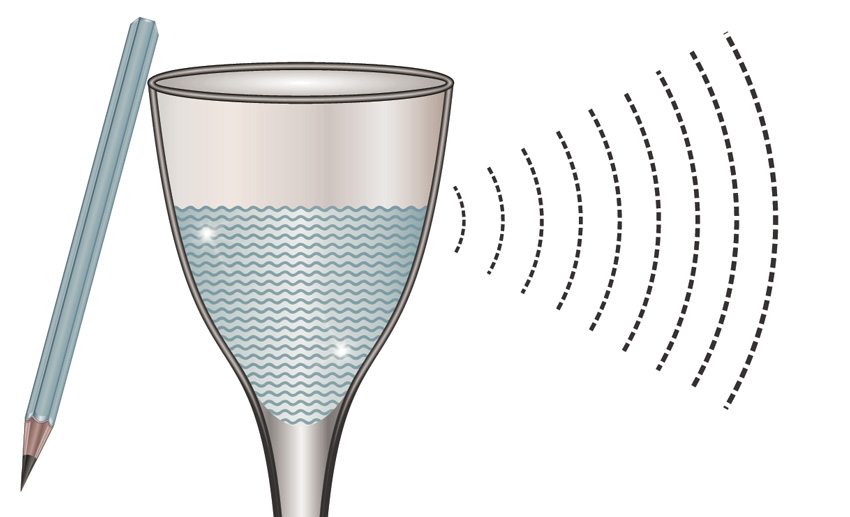You may already have a few good reasons for training your ears, or maybe you’ve just heard that “good musicians need to have a pair of good ears”. I had often heard about ear training, but wasn’t really sure about what it meant. Ear training is about “musifying” yourself: really tuning your ears and brain for music.
Ear training ensures better musical performance, and honestly affects other aspects of your life too. It’s one important part of personal development and programming yourself for success if you ask me. You become more aware, attentive, your memory and brain function better, and you’re more satisfied with yourself and everything else!
I personally need ear training because I sing, and I wasn’t able to hit all the notes accurately in the past. If you saw my X-Factor performance, you’d pity me and many people actually advised me to quit music after that.
But ear training helped me out! You find there are many fellow musicians who want to be able to catch any melody by listening to it just once and play it with their guitar, saxophone or other instrument, including the voice. And when I say “musician”, I mean everyone who loves music and does music in some way. Age, formal background and all the rest matter less than the desire and the commitment.
How Ear Training Works
 Once we understand what we need – we need to train our ears for music – we then need to understand how to do it. Other authors here at EasyEarTraining.com have already produced some good explanatory articles on the why and how of ear training – if you start with the homepage and scroll a little down, you’ll get the whole picture: what is it, who does it, why musicians train their ears, how to do it, and so on.
Once we understand what we need – we need to train our ears for music – we then need to understand how to do it. Other authors here at EasyEarTraining.com have already produced some good explanatory articles on the why and how of ear training – if you start with the homepage and scroll a little down, you’ll get the whole picture: what is it, who does it, why musicians train their ears, how to do it, and so on.
In general tasks get easier when we break them into smaller pieces. A series of small processes or jobs, like in writing, programming, or studying anything.
We do the same with ear training, dividing it into topics and each topic into smaller sets of skills. One of the main subtasks is working on your pitch and relative pitch hearing, and this is what we all normally go through naturally without even thinking about it as we learn music.
My approach to pitch ear training is to relax and listen to the pitches on my instrument (or you could use piano/keyboard if you don’t play an instrument) slowly, and as time goes by you realise you hear better, and you hear what you wouldn’t normally hear before (for example the overtones of the pitch). This is related to absolute pitch hearing (a.k.a. “perfect pitch”) and you can also work to develop tonal memory more consciously. Your mind will remember how a particular pitch sounds and you’ll be able to “guess the note / pitch”.
For relative pitch (hearing the distances between pitches) a popular starting point for many musicians is listening to the different types of interval, and again you break the work into smaller jobs: first some ascending melodic intervals, then other ascending melodic intervals, then descending ones, then harmonic intervals. Then you can move on to triad chords, and so on.
But there are other way to train your ears, too. For example whenever I hear a siren or other combination of two pitches, I start analyzing those sounds in my head. Is that a major third or a perfect fourth?
Another simple and fun example of training your ears: take a glass and hit it gently with your nail. Listen to the sound and then try to locate the same pitch on your instrument. Even if you’re not quite sure, even if you can’t find the sound at first, practice. Then, fill the glass partway with water, hit it again (maybe with a fork this time). Listen carefully with the first few hits, and then try to locate that new note on your instrument.
Or what about your favourite songs? I do this often: I take some passages from songs I like and then try to reproduce them on my piano. This is called playing by ear and it’s another major topic in ear training.
Easily Starting to Play By Ear
So we’ve seen how ear training usually works, and maybe you didn’t even notice how we got into playing by ear with the fun exercise involving the glass! If you pick the right type of container which can produce clear pitches, you’re on the right track! Just experiment, there’s nothing to worry about; you won’t hurt yourself in any way, you’re just stimulating your ears and your body.

This is one easy way of getting into playing by ear. You just hear a single sound or produce one yourself, listen to it carefully, and you’re trying to repeat or imitate it. If you’re an instrument player and want to play by ear with the love of your life (I mean your musical instrument!) starting with single pitches is a good idea, as it’s quite specific and simple. Pitches that are too high or too low will be harder to hear and get, so it’s a good idea to start somewhere in the middle for more effective ear training sessions. Usually the territory around middle C is a good place to start.
Many musicians feel intimidated by the idea of playing by ear. If you start off by trying to play a song it is indeed too hard! But take this simple “one note” approach and you can easily begin playing by ear and see good results quickly. Then build up your skills to more advanced challenges.
Steps to Playing By Ear
To make things smoother, I’ll explain a bit further how you may start. And when I say start, I mean it. It’s a good idea to really put all your previous experience and ideas about playing by ear aside, and get into “child mode”. Curiosity is key during your ear training sessions!
To begin with I recommend learning intervals: perfect fifth, perfect fourth, major third, perfect octave.
Then add: minor third, major sixth, minor sixth, major second and minor second (these last two may require more time and practice involving several practice sessions), major seventh, minor seventh, tritone (a.k.a. augmented fourth or diminished fifth).
You can find a lot of useful tools for interval recognition on the web, and I’d encourage you to share your favourite ones in the comments below. You should also definitely check the Intervals page here at Easy Ear Training!
Melodies are made of intervals, and if you want to play melodies by ear, then you should be able to play intervals by ear. This will make it all easy and pleasant. The pentatonic scale is a good place to start and there’s a good article about it in this Solfa tutorial.
Here are a few tunes you can try to learn with:
First I sing them humming, then with a “HOU” sound. These are real-life sounds with no autotuning or anything. If you’re an instrumentalist, imagine that we’re going to work together, and your task is to create the same melodies with your instrument. And if you’re a fellow vocalist, imagine we’re singing in unison, but you first need to hear all the intervals to understand better what we’re up to. Think only about the intervals between the notes.
Start Simple – Then Keep Going!
Once you’re good with intervals and you hear pitches better, you may proceed to triads, then other chords, and there are more advanced things you can do. The sky is the limit, in fact. If you allow your imagination to help you, if you use lateral thinking and learn what other musicians do, you’ll get your ears (and hence your music) to professional standard in no time.
As a final bit of inspiration and guidance, watch this video on “How to learn anything – fast!”
(Don’t miss the presenter’s medley with the famous four chords!)







